When railroads retire signals they are typically thrown in the scrap heap, sold off to railfans or sent down to the C&S shop to keep any of their surviving kin up and running. For anyone interested in seeing these antiques, it typically means a visit to a museum or a backyard collection. After all, railroad signals are fairly specialized pieces of equipment that don’t really work well for general illumination, but despite this there does seem to be one little exception. Every so often a railroad will down-cycle its surplus signaling equipment into the somewhat less exacting world of grade crossing protection. Now this isn’t exactly common as traffic control signals tend to cast their light for a short distance over a broad angle compared to railroad signals that tend to do the opposite. Still, grade crossing applications can give life to signals far beyond their typical sell by date.
Here we see how the Cape May Seashore Line has employed surplus US&S PL-3 position light lamps as so called “snitch lights” as the frequently rusty rail can make crossing activation a bit problematic and crews need to know if they will have to stop and flag the crossing. Compared to a bare white bulb on the relay cabinet or the small white lenses on the side of a crossing flasher, an amber PL-3 can be visible for a mile or more, even in inclement weather.
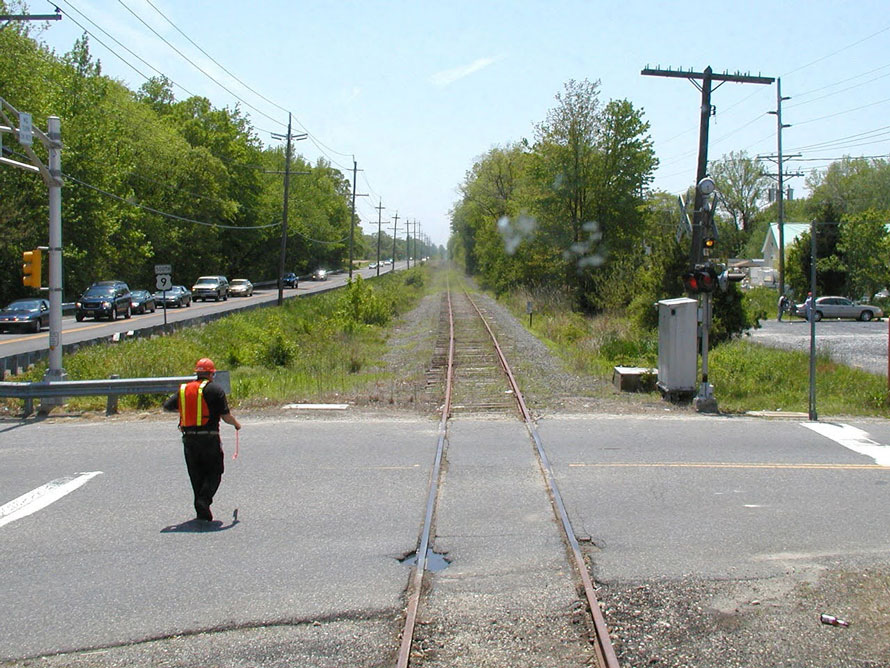
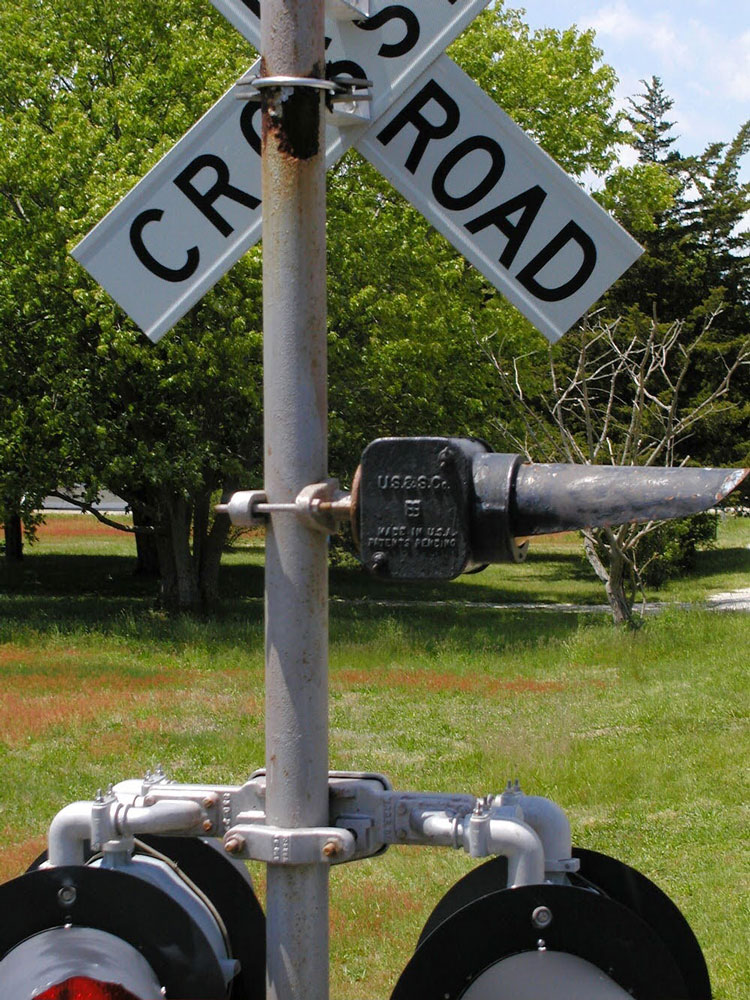
More recently I came upon another repurposed railroad signal in grade crossing service while documenting SEPTA’s FORD interlocking in Norristown, Pennsylvania. A twin stack of GRS model FA modular dwarf signals had been mounted low down on a vintage cantilever flasher mount at the Ford Street grade crossing.
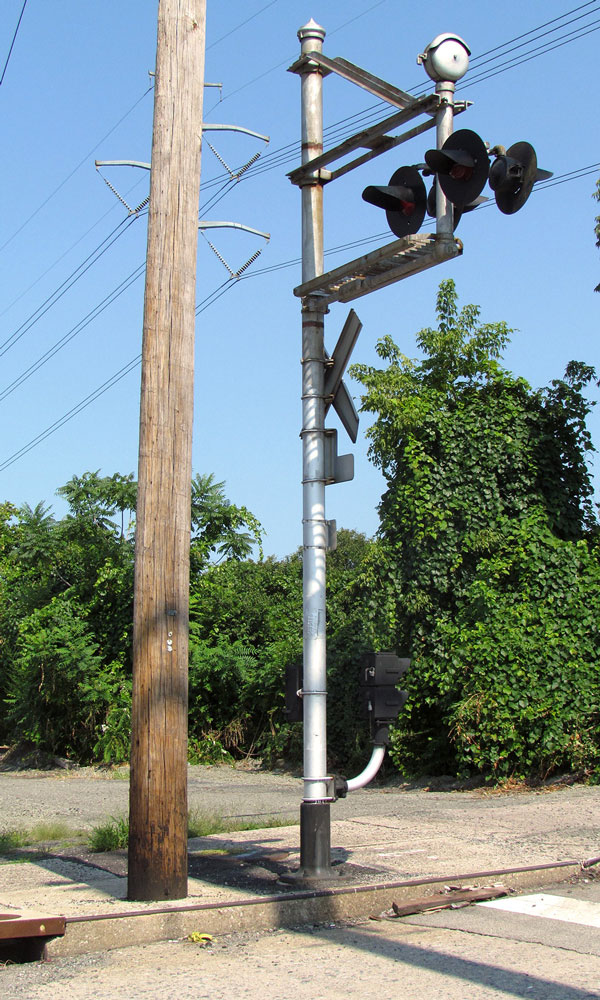
The extra pair of flashers had either been installed for pedestrians or because cars pulled up to the crossing would not be otherwise able to see the flashers mounted on the cantilever mast above them
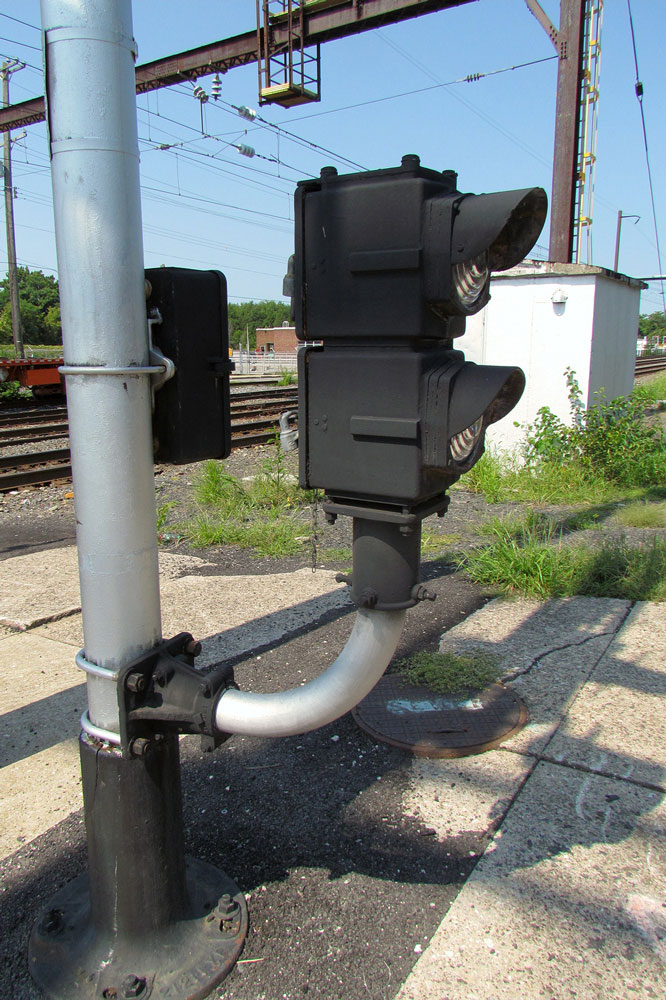
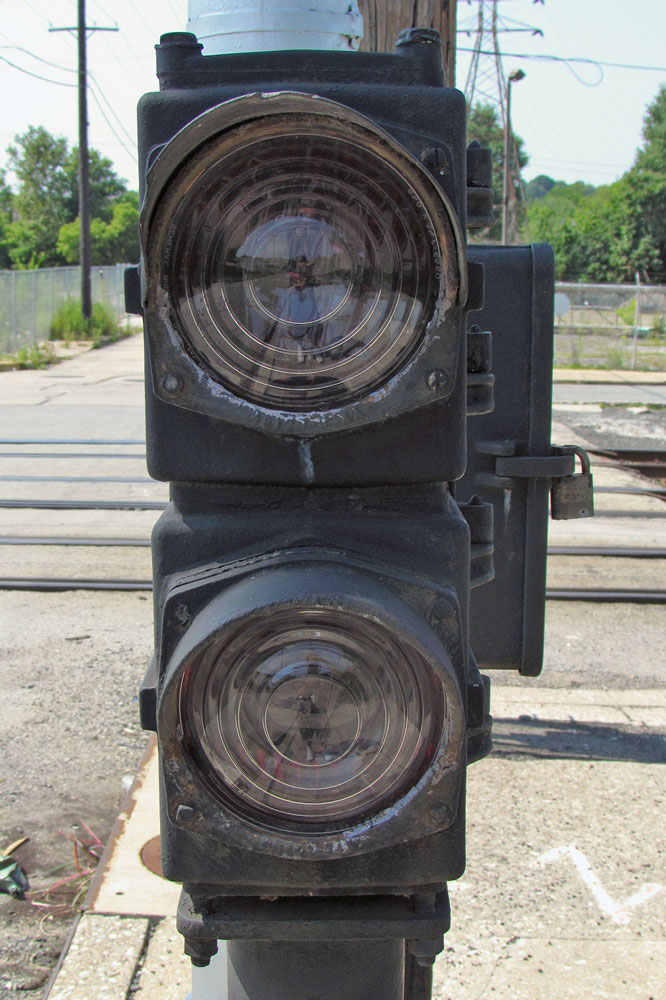
I suspect this may have been a Reading innovation as I discovered a similar pair of GRS FA Flashers on a yellow flashing “No Left Turn” device protecting the Bellevue Ave crossing on the SEPTA R3 West Trenton line in Langhorne, Pennsylvania. I am not sure if they were installed new or from the surplus bin, but you will be hard pressed these days to find an FA still in service as a railroad signal.
I did a double take as I was confronted with railroad signaling in a place I had not expected to see it
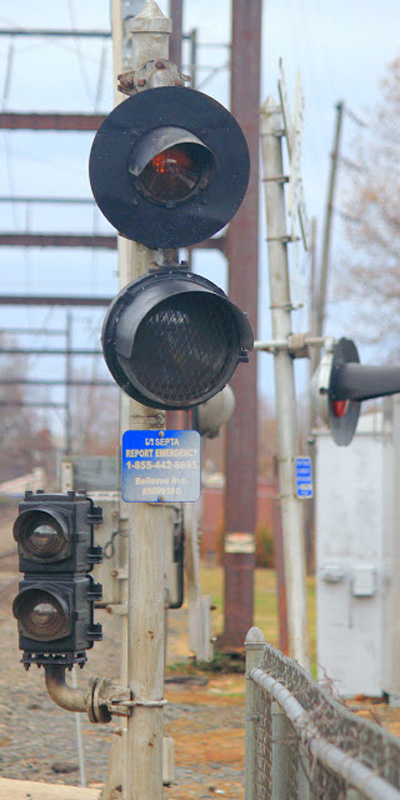
Of course the “No Right/Left turn” lamps like those seen above were also employed as railroad signals in such secondary roles as defect alarms, directional indicators, train order lamps and, as we see below, “take siding” indicators in low cost CTC installations. So this shows us that a certain subset of the signaling catalogue was dual use.
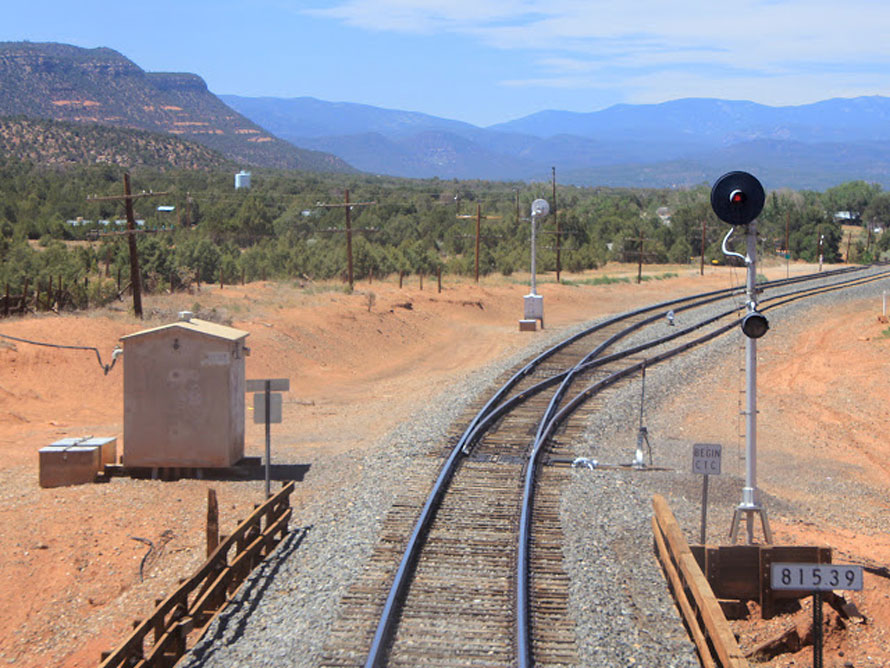
Perhaps the ultimate example of old signals living on in crossing applications is the Baltimore & Ohio’s reuse of semaphore signals as pedestrian crossing gate mechanisms. I first noticed this phenomena while passing through Cumberland, Maryland on Amtrak’s Capitol Limited and, like the SEPTA signals above, I did a double take as I was confronted with railroad signaling in a place I had not expected to see it.
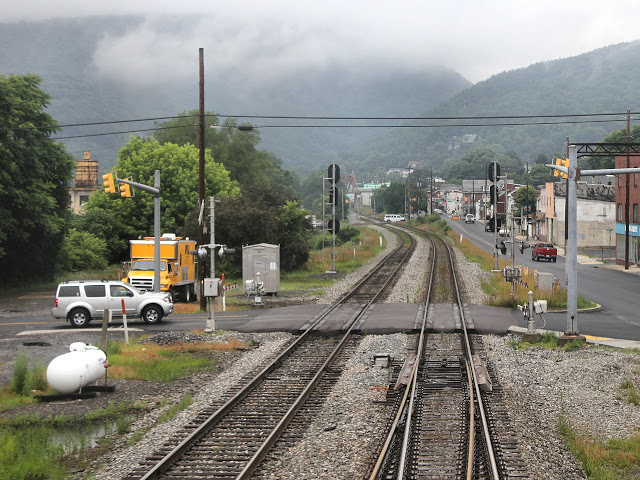
As of September 2019, three of the four pedestrian semaphores in Cumberland had been replaced, but fortunately I knew of one other example of this type of signal reuse in Darby, Pennsylvania at the site of the SEPTA Route 11 crossing of the CSX Philly Subdivision on Main Street.
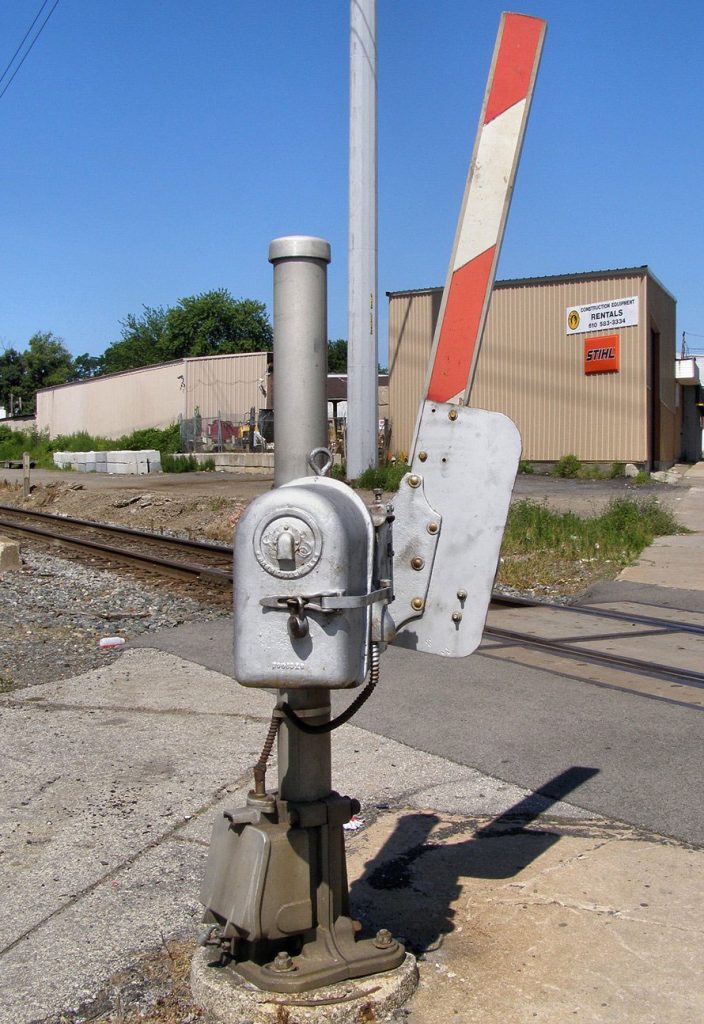
Up close we find a pair of former B&O semaphores protecting the sidewalks and stopping cyclists and pedestrians from crossing in front of trains.
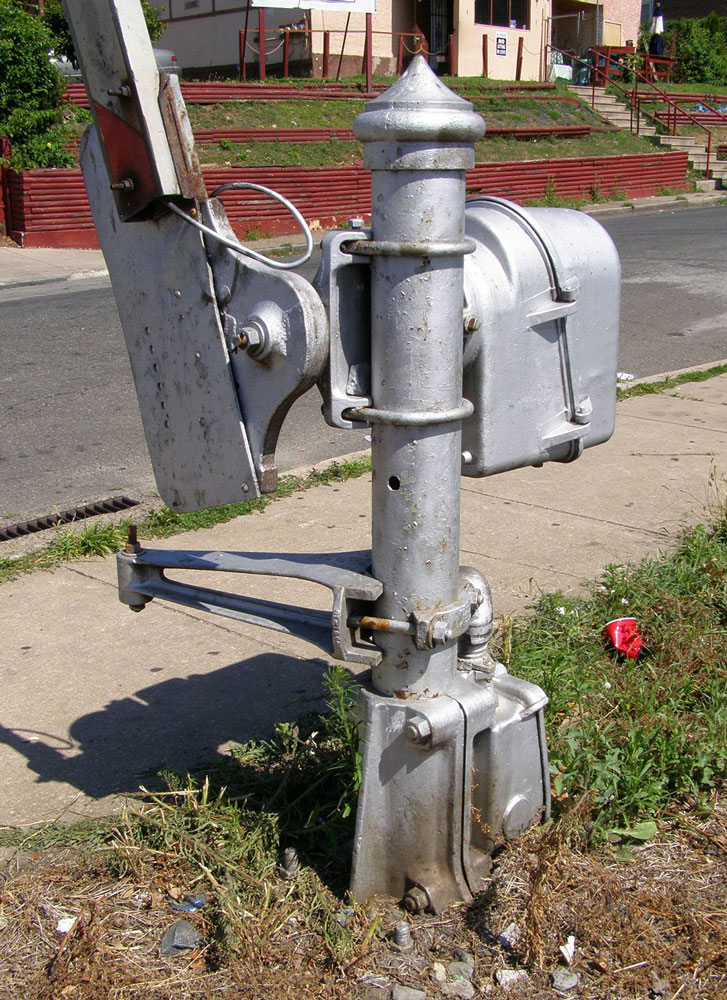
The B&O (or Chessie System) basically replaced the semaphore blade with a red and white striped crossing gate and put it into service.
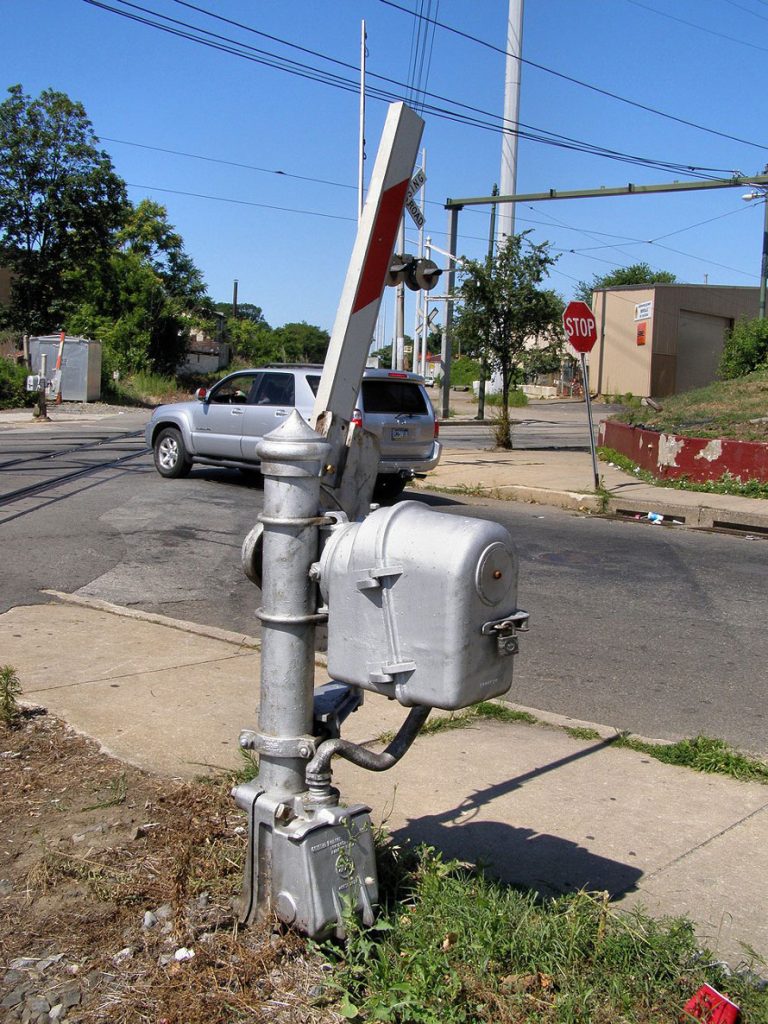
These are 90% as “good” as an in service signaling semaphore. The train approaches the semaphore drops, the train leaves it goes back up again. All that’s missing is the / position so just pretend you’re in manual block territory.
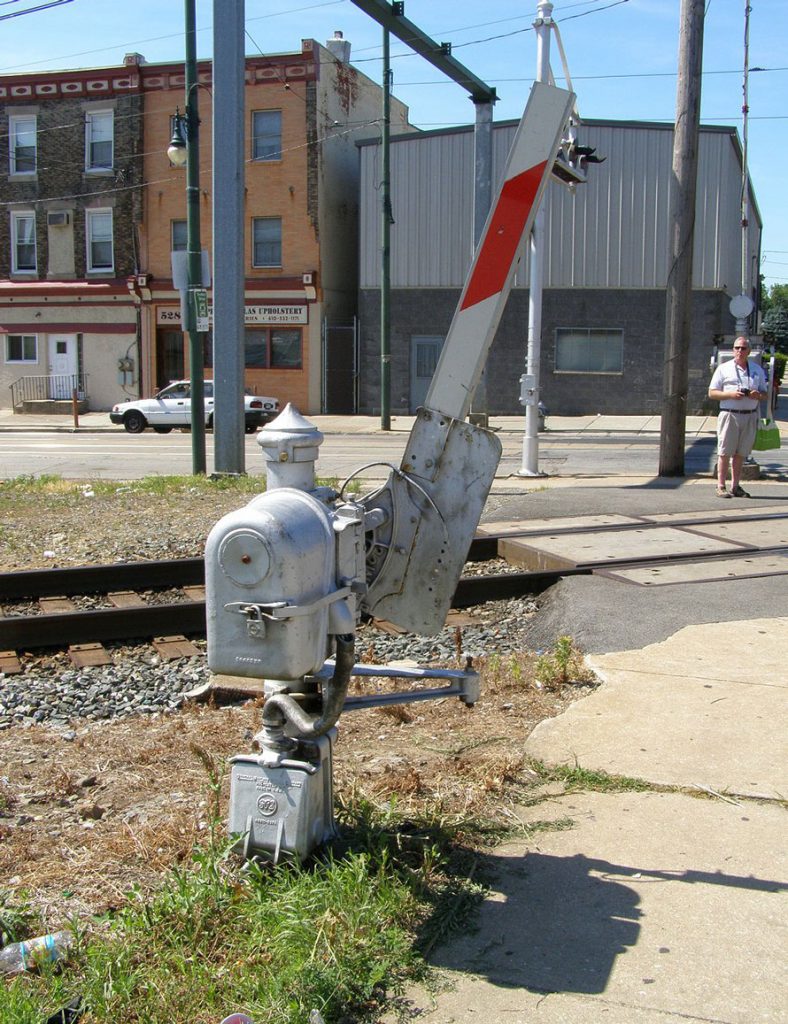
Unfortunately these living artifacts were replaced around 2014 when the Philly Sub was re-signaled. Nothing truly lasts forever, but it is nice that the less demanding world of grade crossing protection has given a few old signals a second act in life.
Michael Brotzman – Photographs and text Copyright 2020
Really enjoy seeing these sort of “odd ball” items that the railroads used.
I have been over many RR crossings never look hard to see if anything like that was ever used! Great pictures and story.
Interesting article on like the man above said, an odd subject.
Thank you- a wonderful retrospective. I’m a retired Signalman, from a Line in Northern CA.I wired and installed many of the units like these shown in the Series. Signal installation was hard, backbreaking work, to install them from scratch. That’s what I mainly remember about it. Felt good though- when it was done. We tested all our Signals, mainly Grade X-ings, on a quarterly basis, including our backup Battery Boxes. The reason for that-= signals would still operate, if the city power ever failed.
It’s great to see the return of the Trackside Photographer